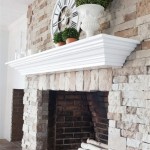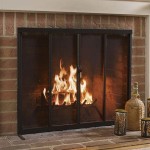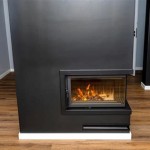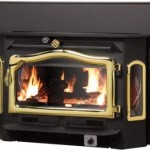Stone Wall Fireplace Ideas: A Guide to Rustic Elegance
A stone wall fireplace offers a timeless focal point for any living space, seamlessly blending natural beauty with functional design. The enduring appeal stems from the variety of stone types, textures, and colors available, allowing homeowners to tailor the fireplace to suit diverse architectural styles and personal preferences. From rustic cabins to modern lofts, a stone fireplace adds warmth and character, creating a welcoming atmosphere for relaxation and social gatherings.
The selection process for a stone fireplace involves considering several factors, including the desired aesthetic, budget constraints, and the structural integrity of the existing wall. Careful planning and execution are paramount to ensure both the visual appeal and safe operation of the fireplace. Understanding the myriad options available is the first step toward creating a stunning and functional centerpiece.
Choosing the Right Stone Material
The type of stone selected significantly impacts the overall look and feel of the fireplace. Natural stone options include fieldstone, river rock, ledgestone, and slate, each possessing unique characteristics. Fieldstone, with its irregular shapes and earthy tones, imparts a rustic and informal ambiance. River rock, smooth and rounded from years of water erosion, offers a more refined and contemporary aesthetic. Ledgestone, characterized by its thin, stacked profile, provides a clean and linear appearance, ideal for modern or transitional spaces. Slate, known for its dark, sophisticated color variations, creates a dramatic and elegant effect.
Beyond natural stone, manufactured stone veneer presents a cost-effective alternative. This engineered product replicates the appearance of natural stone while offering benefits such as lighter weight and easier installation. Manufactured stone is available in a wide range of styles and colors, providing homeowners with numerous design possibilities. The choice between natural and manufactured stone hinges on budget, desired authenticity, and installation considerations.
Furthermore, the color palette of the stone significantly influences the room's overall atmosphere. Light-colored stones, such as limestone or light sandstone, create a bright and airy feel, while darker stones, such as granite or dark slate, introduce a sense of warmth and intimacy. The surrounding décor and existing color scheme should be carefully considered to ensure a cohesive and harmonious design.
Design Considerations for Stone Fireplaces
Beyond the stone material itself, the design of the fireplace surround and mantel plays a crucial role in its overall aesthetic. The surround encompasses the area immediately surrounding the firebox, and its design can range from minimalist to elaborate. A simple, unadorned surround allows the stone itself to take center stage, while a more ornate surround, featuring intricately carved details or decorative tiles, adds visual interest and sophistication.
The mantel, a shelf above the fireplace opening, provides an opportunity to display decorative items and personalize the space. Mantels can be crafted from a variety of materials, including wood, stone, and metal. A rustic wooden mantel complements a fieldstone fireplace, while a sleek marble mantel enhances the elegance of a slate fireplace. The size and placement of the mantel should be carefully considered to ensure it is both visually appealing and functional.
Integrating built-in features, such as shelving or storage cabinets, can further enhance the functionality and aesthetic appeal of the stone fireplace. Built-in shelving provides space to display books, artwork, or decorative objects, while storage cabinets offer a convenient place to store firewood, blankets, or other items. Careful planning is essential to ensure that the built-in features seamlessly integrate with the stone surround and overall design of the room.
Installation and Safety
Proper installation is paramount to ensure the safe and efficient operation of a stone fireplace. The installation process typically involves preparing the wall surface, applying a scratch coat of mortar, and then carefully adhering the stone to the wall. It is highly recommended to consult with a qualified mason or contractor to ensure that the installation is performed correctly and in accordance with local building codes.
Safety considerations are also of utmost importance. The fireplace should be properly vented to prevent the build-up of carbon monoxide, a colorless and odorless gas that can be deadly. A carbon monoxide detector should be installed in the vicinity of the fireplace to provide early warning of any potential hazards. Regular maintenance, including chimney cleaning and inspection, is essential to ensure the safe and efficient operation of the fireplace.
Furthermore, the selection of a fire-resistant hearth is crucial to protect the surrounding flooring from sparks and embers. The hearth should extend a sufficient distance in front of the fireplace opening to prevent accidental burns. The use of a fireplace screen or glass doors can further enhance safety by preventing sparks from escaping into the room.

25 Stone Fireplace Ideas For A Cozy Nature Inspired Home Surround Country

50 Sensational Stone Fireplaces To Warm Your Senses

50 Sensational Stone Fireplaces To Warm Your Senses

Stone Veneer Interior Design Living Room Kitchen Bedroom Ideas More Buechel
:strip_icc()/Screenshot2021-10-19at09-16-46Portfolio-AmyBartlamPhotography-1f35ea9ec29846779a2d62b42676eff9.png?strip=all)
20 Best Stone Fireplace Ideas

Natural Stacked Stone Veneer Fireplace Ideas

22 Living Room Design Ideas Featuring Stone Fireplaces With Fireplace Contemporary Built Ins

23 Stacked Stone Fireplace Ideas Sebring Design Build

Fireplace Ideas Stone Creek Furniture

Stone Veneer Fireplace Ideas That Will Warm Up Your Home Ply Gem
Related Posts








